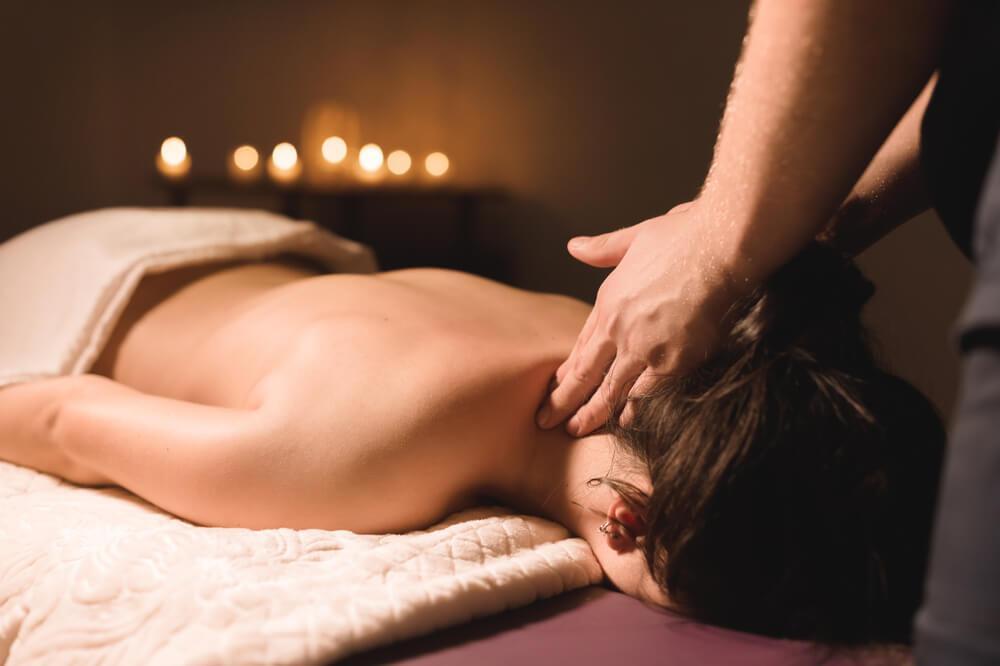
Have you noticed that you feel a bit down whenever winter swings around?
Everything feels a bit gloomier, even you?
Even though the medical debate regarding the aptly named disorder – SAD (Seasonal Affective Disorder) is still raging (well, not so much raging as simmering), there are various studies that have proven that it is very much real.
For a long time, people have been noticing that their mood alters with the changing season.
Scientists may disagree on the when, how, and what, but if you yourself have ever felt seasonal depression – well, then it’s very much real, and it needs to be dealt with.
Here are some science-backed ways to try to appease the winter blues and send them scurrying into the snow.
What is SAD?

No, this is not a grand philosophical question (although it might be).
Seasonal Affective Disorder is actually a type of depression which usually occurs in the winter. It is, therefore, also known as seasonal depression.
SAD affects a person’s sleep, appetite, general mood and energy levels. Basically, it influences all spheres of one’s life, making them an even completely different person than they were in the summer.
About 1-2 percent of people suffer from SAD, and it is more common in women and young people. It is also more common in people who live far north or south of the equator.
Here are some of the symptoms of seasonal depression:
· Loss of interest in the activities that you once enjoyed
· Feelings of sadness, despair, hopelessness
· Feelings of anger, irritability
· Rise of stress and anxiety levels
· Fatigue, reduced sex drive
· Weight or appetite changes
· Changes in sleeping pattern
· Unexplained pain
Of course, the symptoms vary from one person to the next, and they also depend on various other factors. In order to be diagnosed with SAD, however, you have to experience these symptoms for two or more consecutive years.
As a form of depression, SAD is also treatable and if you feel like your symptoms have worsened, it is time to see a doctor.
How to Fight the Winter Blues, as Told by Science
Now, even if you’re starting to feel down and like there’s nothing you can do, the scientific side of life says – there most certainly is! There are ways you can increase your serotonin levels, which, in turn, helps you ward off the pesky SAD symptoms.
Here are some of the ways science says you can fight off the winter blues.
Light Therapy

Basically, when you’re suffering from seasonal depression, your body’s craving the sun and its rays.
And, frankly, it’s a bit difficult to find it when you live somewhere far up north or south. That is why modern science has decided to lend a hand.
Even though nothing beats the sun’s rays, there is a pretty good substitute, invented for precisely this purpose. Research has shown that light therapy is incredibly effective in warding off SAD.
Basically, you’re supposed to use something called a light box. Now, light boxes differ in light intensity, cost, safety and even style. Those are all important issues to take into consideration if you’re thinking about getting one.
But first, consult your intentions with your doctor. It is often that light therapy is more effective when it combined with another SAD treatment, with which your doctor can provide you.
The light box is supposed to mimic outdoor, natural light. Some researchers believe that it is precisely this type of light that causes a chemical change in your brain and eases the symptoms of seasonal depression.
Generally, it is best to use it within the first hour of waking up, and it is best to use it for 15-30 minutes. Your eyes should be open, but you must not look directly into the light. Also, be mindful to remain at a distance of 40-60 centimeters.
Also, make sure that you get a light box that is made specifically to treat seasonal depression, because there are similar lamps used for skin disorders and can cause eye damage. Before you use any type of light box, consult with your eye doctor, as well. You can never be too careful, especially when it concerns treatment.
Exercise

Yes, it’s incredibly difficult to find the energy to get up and exercise, especially with seasonal depression, when you sometimes barely find the strength to get up and eat.
However, by not doing exercise, you’re depriving your body of the necessary boost of endorphins that come with regular exercise. Thus, you are stuck in a loop you cannot get out of, which only further worsens the symptoms.
According to numerous studies, exercise is a good treatment against depression. In general, it leads to a chain reaction in the body and the brain which can result in many health benefits. It releases endorphins and serotonin, and also stimulates the growth of new brain cells and blood vessels, which then bring more oxygen into your body.
However, there is something you should be mindful of. Namely, when you start exercising, try not to exert yourself and to do the exercises you will actually enjoy. Otherwise, you might lose your zeal even before you started.
Most physicians can even prescribe exercise to you as a form of treatment, depending on the particularities of your case.
Now, while the benefits of exercise are numerous, and you may be aware of them, that doesn’t mean that you can simply force yourself do it. There are times when it’s difficult to get out of bed and it is precisely then that exercise is certainly the furthest thing on your mind.
There are ways you can get your body moving and to make it easier to start with exercises:
- Start small – Give yourself a break, dealing with depression is not easy. That is why it is important to know when not to push too hard. Tell yourself you’ll only exercise for five minutes and go from there. It’s not a heavy duty workout, but at least you moved, at least you started. Then, you’ll be finding yourself doing 20-minute exercises in no time.
- Create a comfortable environment for yourself – In this day and age, everyone’s at the gym. And while that is healthy, it is also not the most comfortable environment for everyone. Perhaps you like the outdoors? Perhaps you enjoy the trail that goes near your house? Whatever environment suits you is usually the best for you and your mental health. If this includes exercising at home in your pajamas, then so be it.
- Get the support of a friend – The best thing you can do is ask your friends to support you. They will always be there when you need them, through the highs and the lows. So why not in this? There’s nothing better than sometimes running or going to a Zumba class with a dear friend, a friend with whom everything seems easier.
Cognitive Behavioral Therapy (CBT)

Cognitive Behavioral Therapy is a type of psychotherapy which is meant to modify thought patterns to change moods and behaviors. It is based on the idea that negative feelings and actions are actually the result of current distorted beliefs or thoughts.
It is a mixture of cognitive therapy and behavioral therapy, i.e. the cognitive part of the therapy focuses on moods, while behavioral therapy aims to modify actions and behavior.
Some studies have even proven that CBT is better for treatment of seasonal depression than light therapy.
Basically, CBT works like this – a professional will help you identify negative thoughts, or false thoughts you may be experiencing. Then, they will try to replace those thoughts with more realistic ones, which are, of course, healthier.
Cognitive Behavioral Therapy makes you aware that you are experiencing such thoughts, teaching you to replace them with more positive ones. In turn, this leads to a change in your behavior.
Another reason why CBT is quite effective is that it offers you a chance to identify current life situations that are contributing to your depression. It may be just the season, yes, but more likely, there are also other things exacerbating your condition.
In addition to talk-based therapy, your therapist can ask you to keep a journal so you can write down what has happened to you and what your responses have been. With the help of the journal, you and your therapist can break down your responses into categories of self-defeating thought.
Then, you can turn the negative thought patterns that you notice in the diary into more constructive patterns.
Some techniques that may be employed during CBT include:
- Practicing accurate and balanced self-talk
- Learning to control distorted reactions and thoughts
- Learning to assess external situations and responses
- Using self-evaluation to reflect on an issue and respond adequately
In general, CBT is incredibly efficient in treating not just seasonal depression, but depression as a whole. Sometimes it is paired with medicine and other forms of treatment.
Other Ways You Can Fight the Winter Blues
When it comes to the following ways of fighting (and beating) SAD, there are some other ways to do that. While the following ways will not make your seasonal depression go away on their own, they offer help on your path to getting better.
Now, remember, not everything will work on everyone, so it’s important to test a few things out and see if they help you feel better.
When you’re suffering from seasonal depression, perhaps it is time to dedicate yourself – to yourself; it’s time for some self-care, in whatever shape or form you can get it. Seasonal depression is not an insignificant thing, so it’s important to try something that might make you feel better, even for a little while, even for a little bit.
Here are some of the other things you can do to fight the winter blues:
Drink Tea

Yeah, sometimes it’s as simple as that. During winter days, it’s cold, dark, your body feels sluggish and you feel underwhelmed. But, that is the perfect time to sip a cup of warm tea while watching your favorite TV show, right? Just picture it – you, your laptop, and a cup of tea in your hand to chase away the blues. Some of the best teas you can take to fight the winter blues are chamomile tea, lemon balm tea, green tea, peppermint tea and rose tea. Enjoy!
Take a Nap
This may seem counterintuitive, considering that hypersomnia may be a symptom of seasonal depression. However, it all boils down to – the time spent sleeping. Taking a short 20-30 minute nap actually reduces anxiety and the feeling of depression, while longer naps contribute to grogginess and overall sluggishness. That is why a short and sweet nap can help you with your winter blues.
Eat Good Food
Easier said than done, right? Especially when there are soooo many delicious options, but none of them seem terribly healthy. Fortunately, there is also a selection of tasty healthy bites out there that can have mood-boosting benefits. Here is some food you should include in your diet, at least for a bit – fish (omega-3 fatty acids can lead to increased serotonin), vegetables (well, of course veggies are gonna be on the list!), beans (which help maintain stable blood sugar levels and are a great source of folate), nuts and seeds (especially walnuts, flaxseed and chia seeds).
Get a Massage

There have been various studies that have documented that massage therapy is connected with the relief of anxiety and depression. According to experts, massage can reduce the feelings of anxiety and depression, and decrease your heart rate and blood pressure. It can also lower work-related stress. And, of course, it feels divine and your muscles will definitely be grateful to you.
Socialize
Many people suffering from seasonal depression reveal that socializing is one of the most difficult things they can do. However, studies have shown that social support is quite important in treating depression. There’s nothing like chatting with close friends and family when you’re feeling down. But, make sure not to waste your energy on people you’re not comfortable with. Meet up with the people who are closest to you, who can support you on your path. Chat with them, let them know what is going on.





Leave A Comment